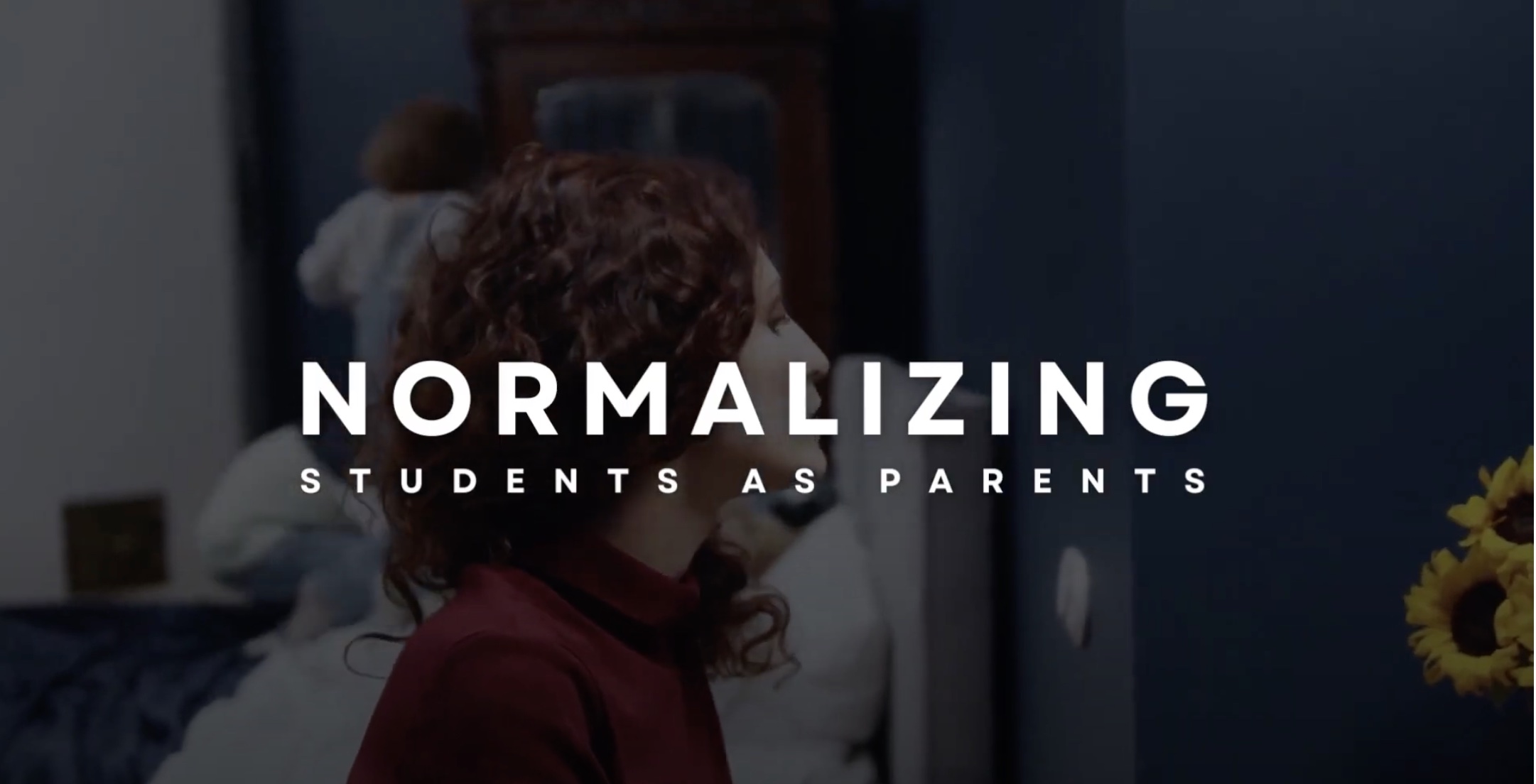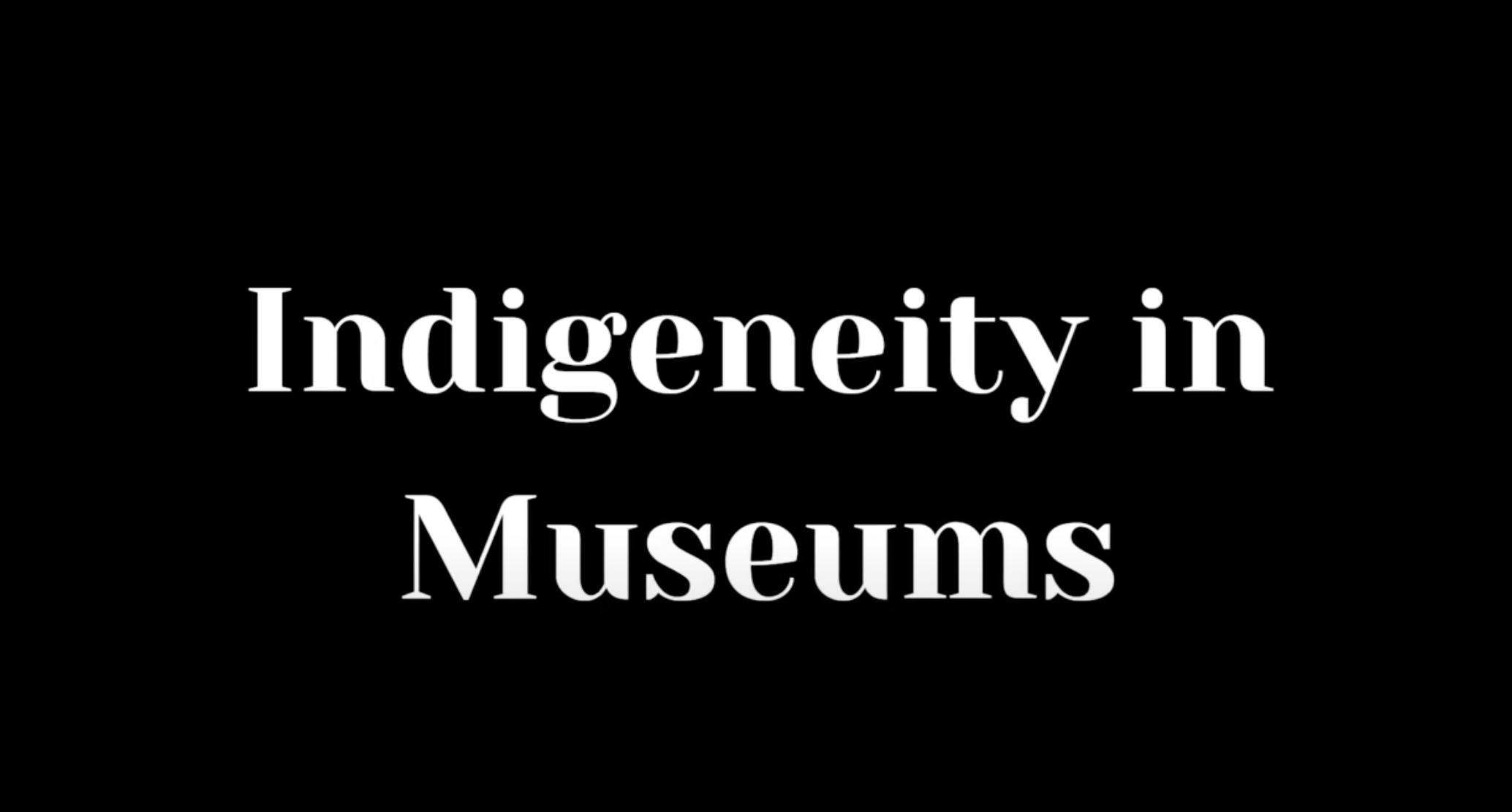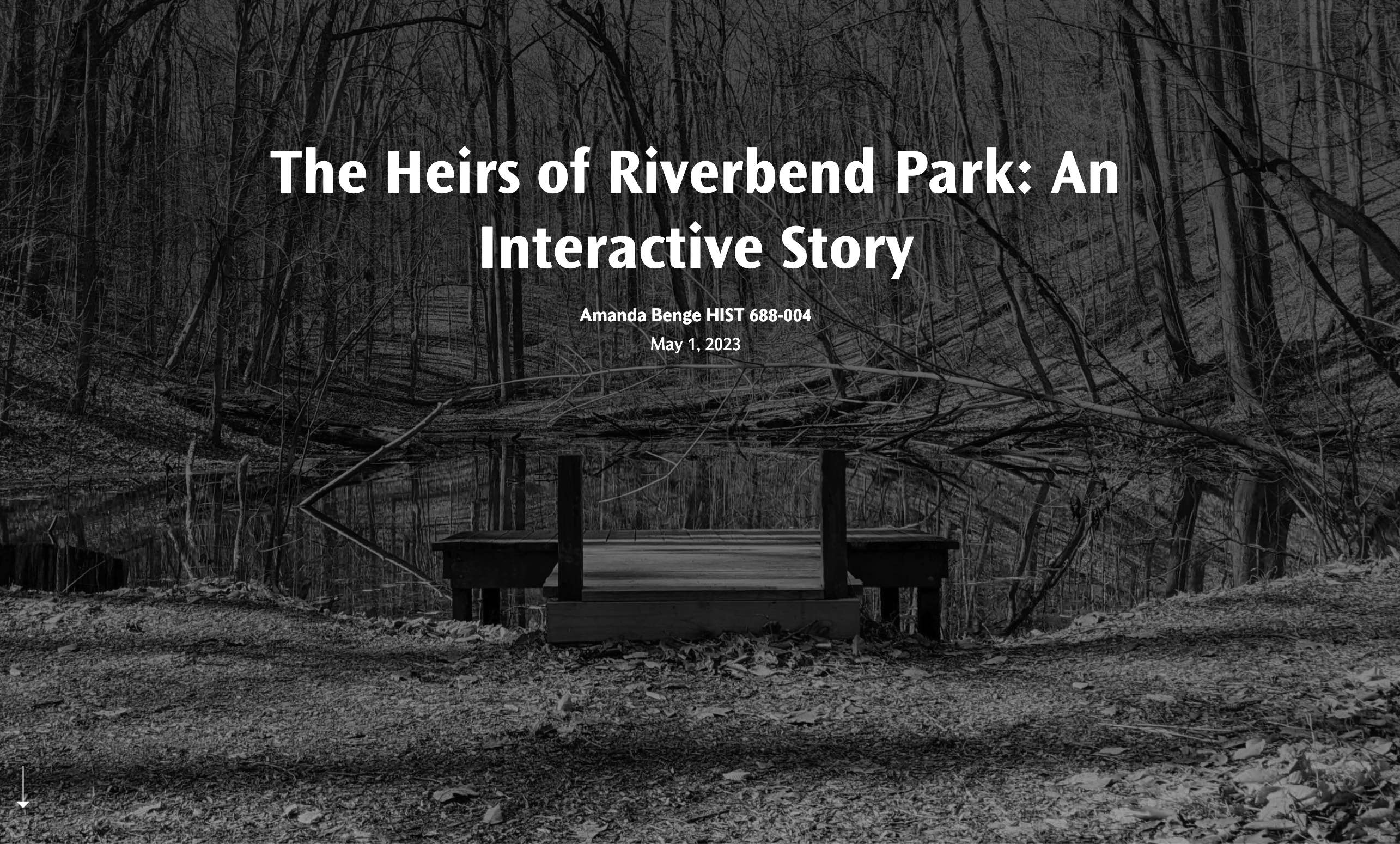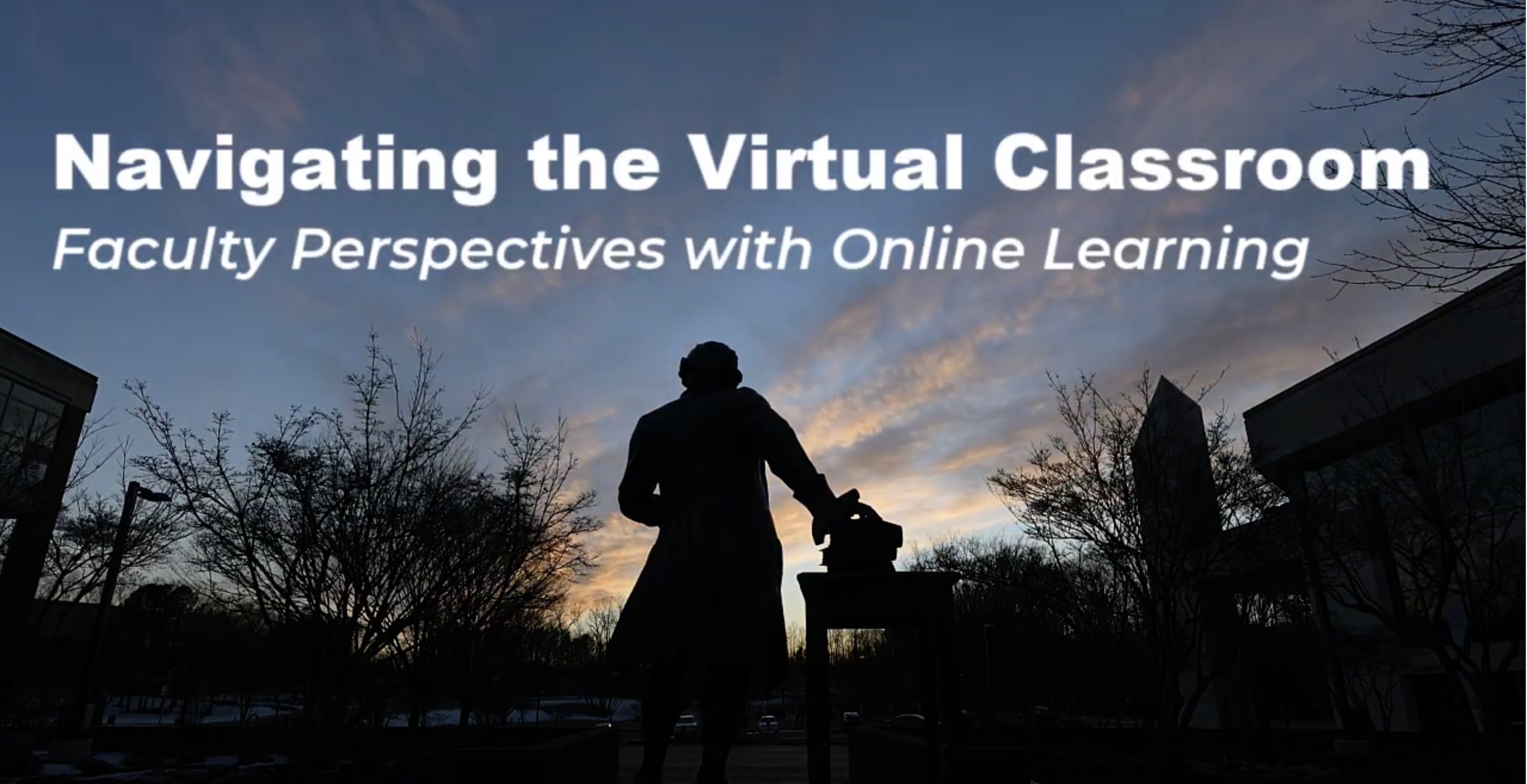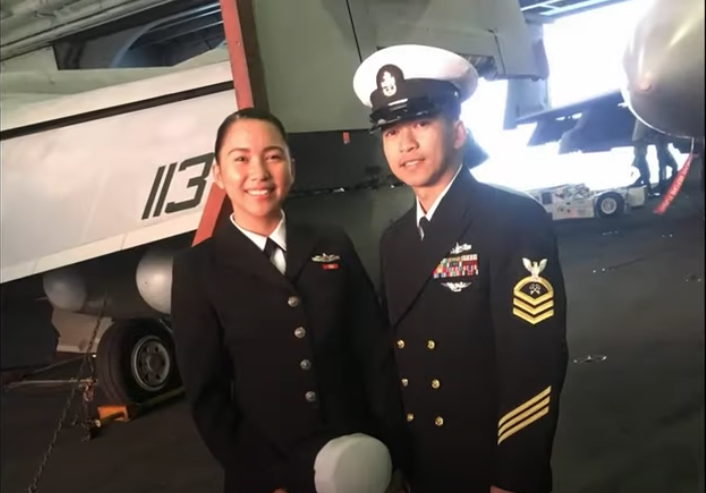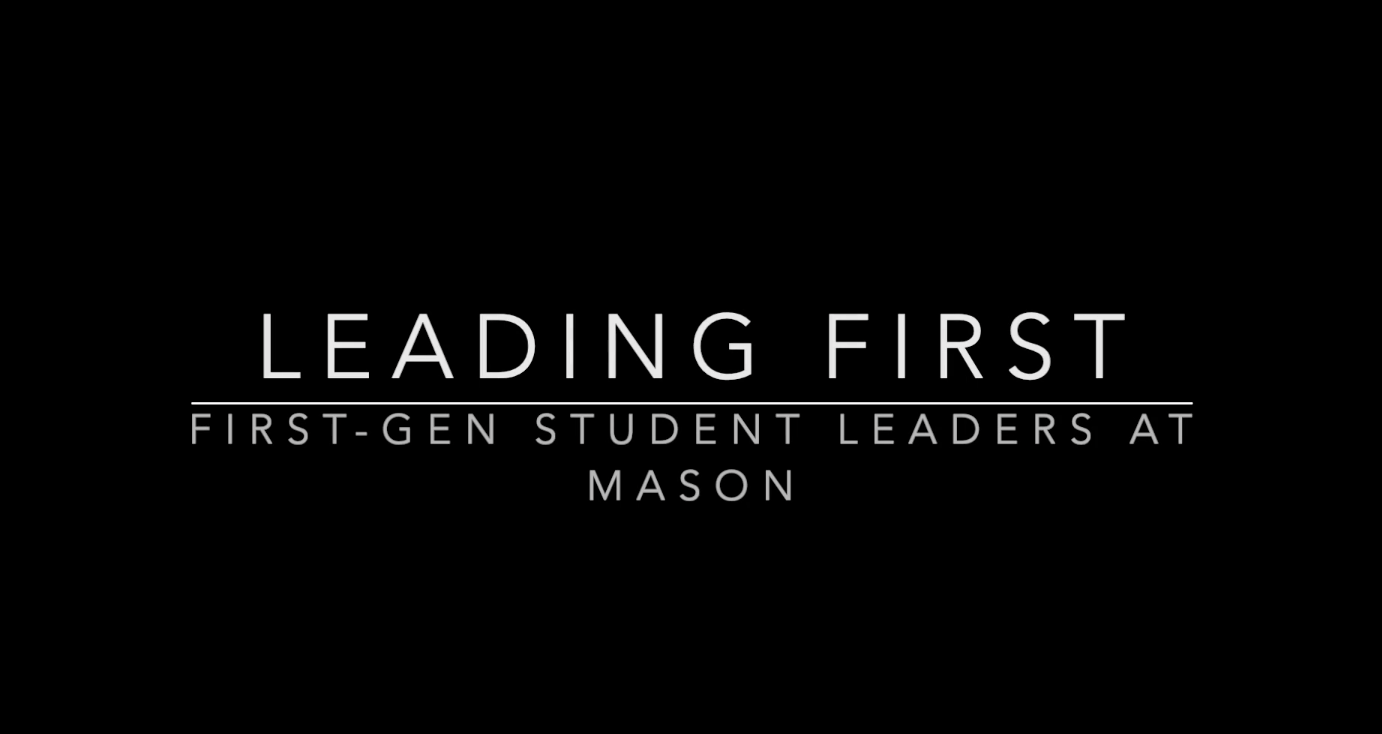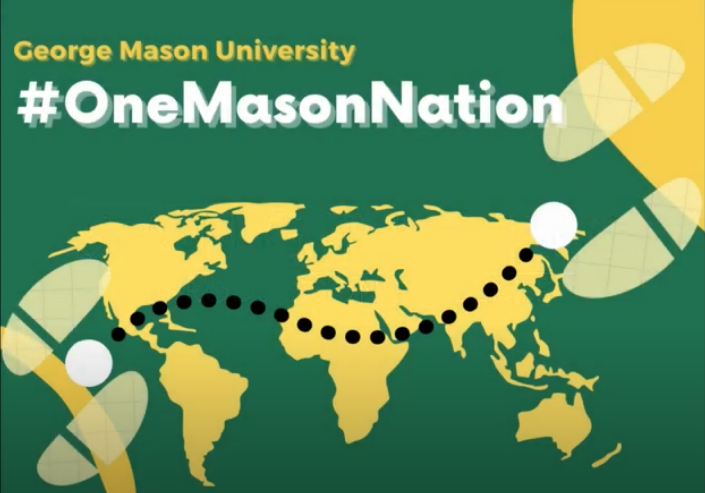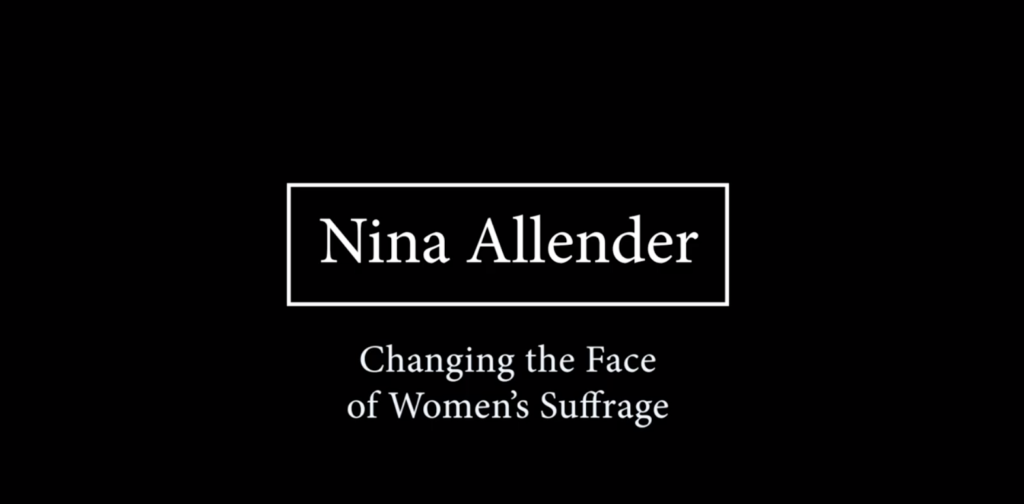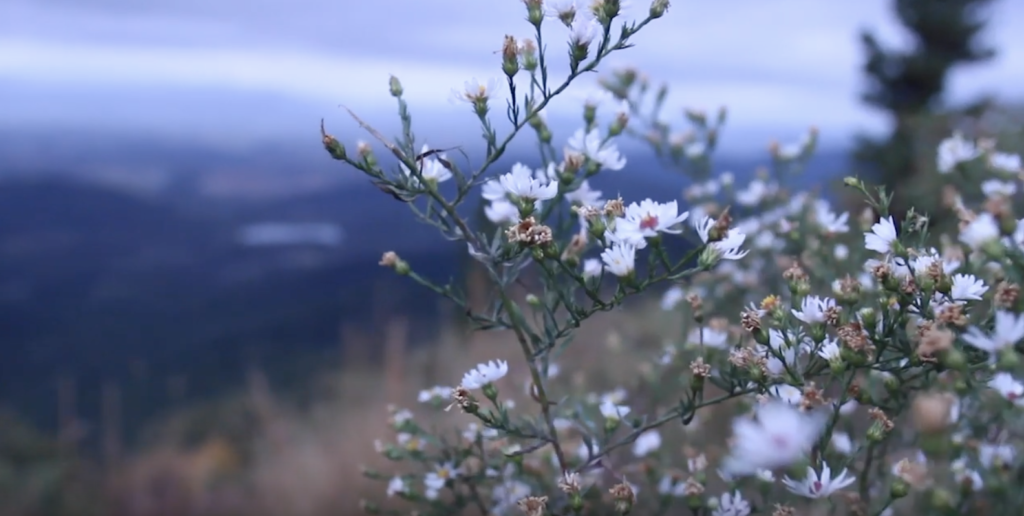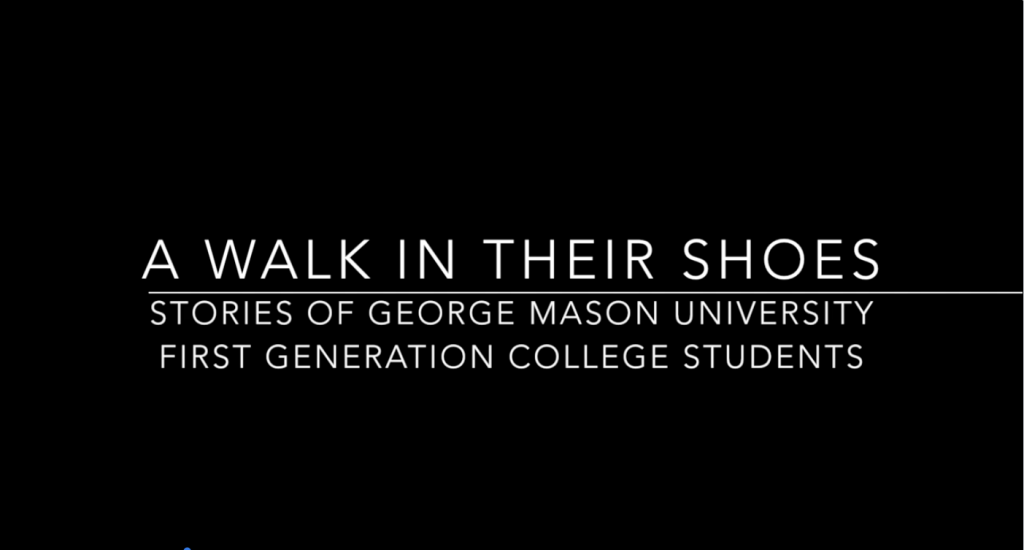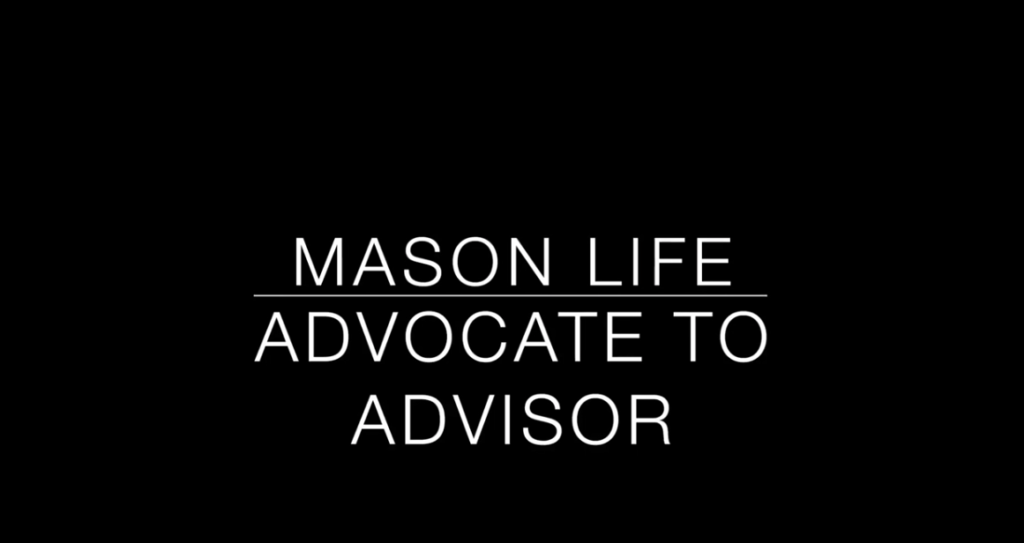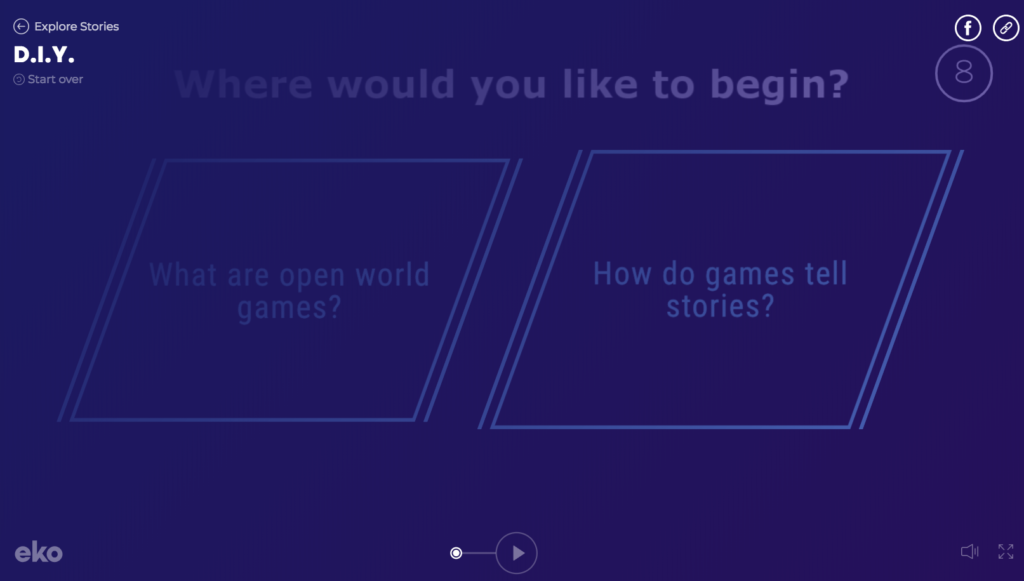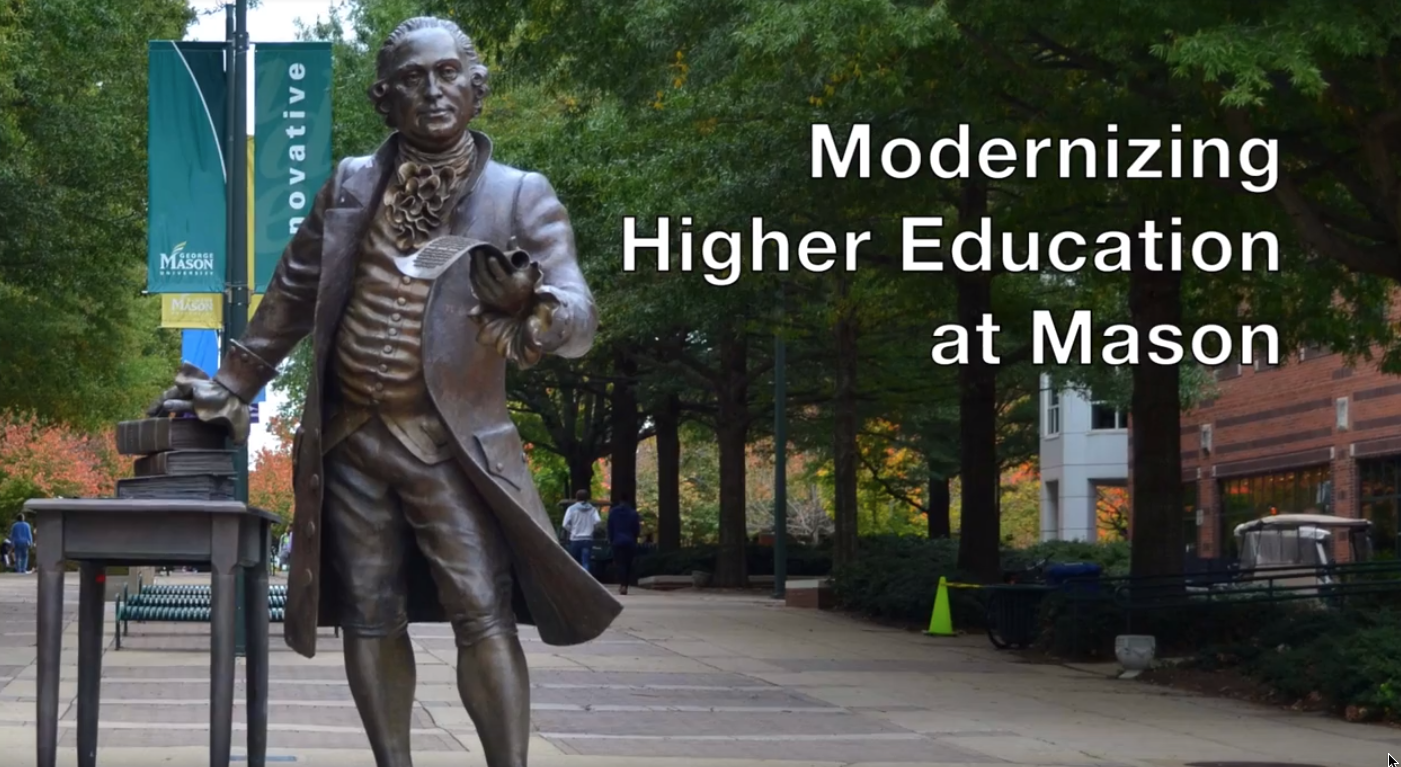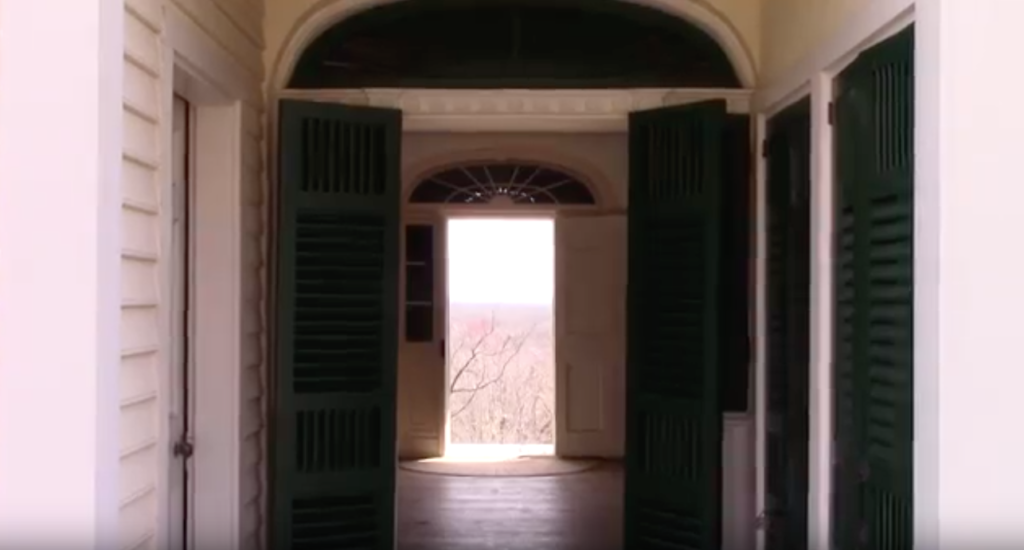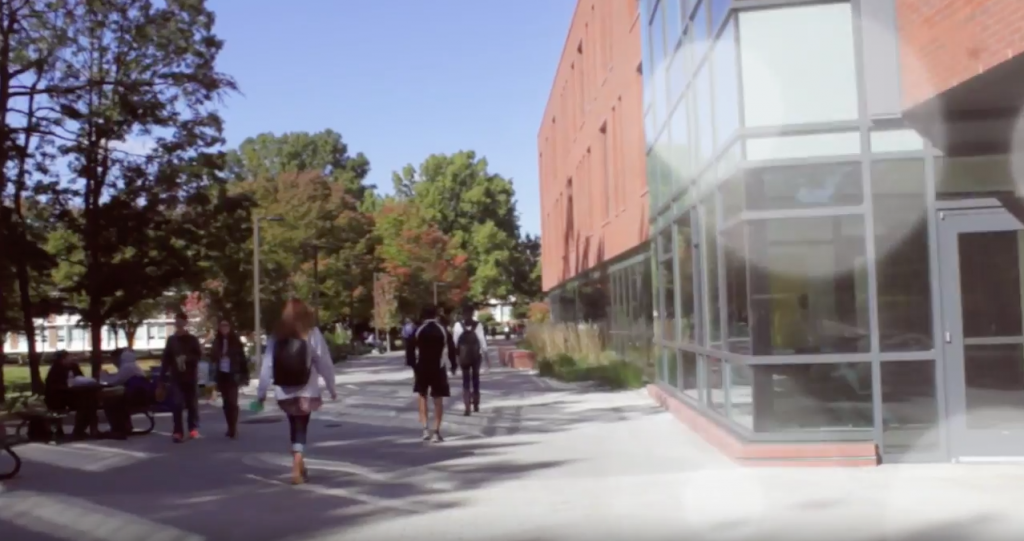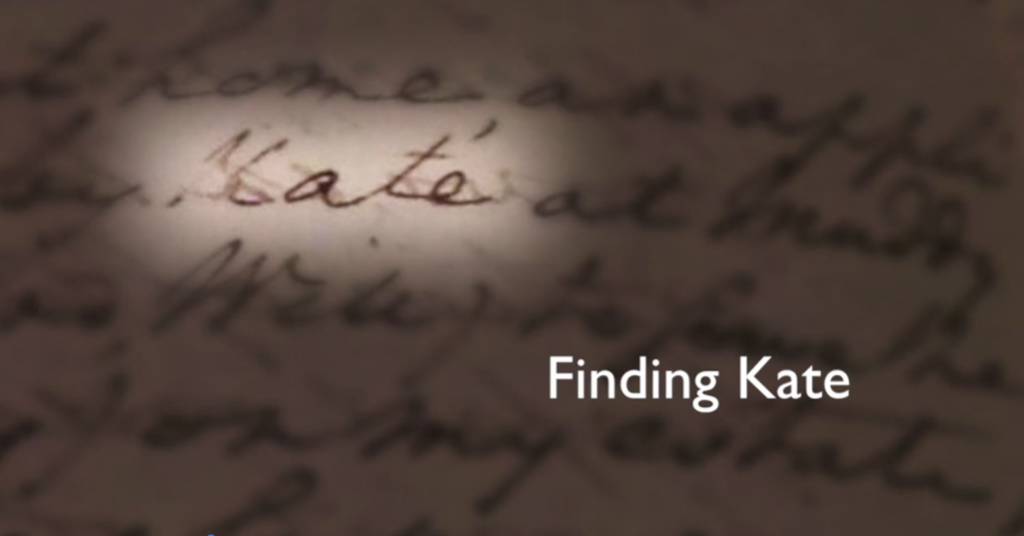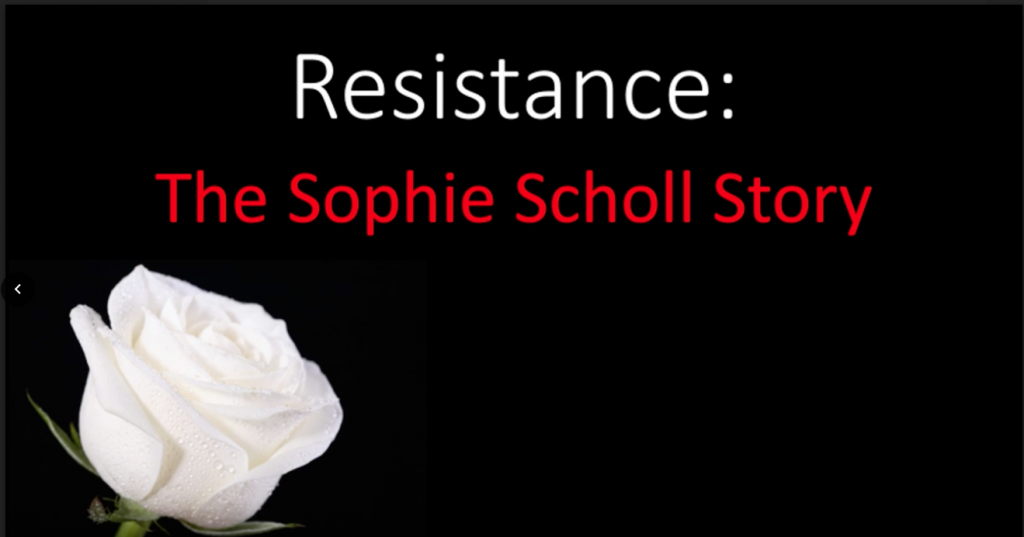What is scholarly digital storytelling?
Students have produce digital stories on a range of topics, grounded in their academic research and an interest in engaging in scholarly communication beyond the classroom.
Explore student stories:
Normalizing Student Parents on College Campuses
Veronica Visser, MA Student, Higher Education, George Mason University
Student parents are often an invisible population on college campuses. 70% of the roughly four million college students who are parents of children under the age 18 are moms. These students need to earn degrees in order to achieve some sort of financial stability and mobility. However, these students are the ones who unfortunately often need to drop out of college or stay longer to finish because they lack systems of support for themselves and their children. While earning a postsecondary degree may seem like a luxury to some groups of students, obtaining a job or advancing in their careers is not even an option for student parents. Student parents need institutional support in order to complete their education. They need support in order to ensure a better future for themselves and their children. It is time for these students to raise their voices. It is time to understand the challenges student parents face today and to normalize student parents on campus.
Rachel Whyte, PhD Student, History, George Mason University
Often people go to museums and are fascinated by what they see, however, visitors do not tend to think outside of the scope that is offered to them in those exhibits. By examining the origins of how the museums were established, and the influences that have created systematic biases within exhibit interpretation, this 10-minute documentary created for general audiences aims to change how people view museums. By focusing on representation of specific cultures within these spaces, specifically Indigenous cultures, the documentary is also able to demonstrate to people how the voices telling a history can and will skew what is understood. It highlights the importance of having a culture’s voice at the center of a culture’s history. It is meant to engage those who are on the edge, teetering, between what is right in wrong. The goal is to spark inspiration and create allies that will then go, do more research and continue to have conversations about issues such representation in museums.
The Heirs of Riverbend Park: An Interactive Story
Amanda Benge, MA Student, History, George Mason University
Fairfax County owns hundreds of acreages of land dedicated as park spaces. Many less developed parks lack a general knowledge of their history and of the people that resided there over time. One such place, Riverbend Park in Great Falls, Virginia, does not have an official history written yet. Little is known about the families that occupied the land over the last couple hundred years, including the St Clairs. The St Clairs were close relatives of the Jackson family from the Great Falls area, but little else is known about them. Who were they? Where did they go? Why did history forget them? Discover the story of the St Clair family in this interactive Storymap hosted through ArcGIS. Use the resources provided to uncover the hidden story that surrounds this mysterious 19th-century family. Explore interactive maps, historical documents, and other resources to find clues to help uncover their story.
Navigating the Virtual Classroom: Faculty Perspectives with Online Learning
Charles Kreitzer, PhD Student, Higher Education, George Mason University
Explore the world of online education through the eyes of six faculty members committeed to desining high-quality and engaging online learning envronments. In this digital story, our goal is to demystify online learning and provide valuable insights that can help faculty, like you, excel in this dynamic modality. Quality education doesn’t just happen; and, in today’s interconnected world, the role faculty play in shaping the future of learning has never been more important.
We’ll explore the world of online learning through the eyes of six faculty, each with their own unique experiences and advice, including strategies they’ve learned along the way to create student-centered and engaging learning experiences. We hope their journeys inspire you to embrace the ever-evolving world of online learning and continue to push the boundaries of what is possible, ensuring that every student has the opportunity to thrive and succeed in this digital age.
Kris Nohe, MA Student, History, George Mason University
Aimed at engaging a high school audience with the fact that history is made up of people making choices, this project breaks down the story of Joseph Seng and the Wyoming State Penitentiary baseball team into interactive sections wherein the student chooses their own path through the material. While students are able to go through the material taking different routes, all information relevant to the lesson can be obtained through any single path. At the end of the video, there are several activities for students to engage further with the material. A quiz is used to establish basic comprehension and promote notetaking practice, while a poll is designed to lay the groundwork for classroom discussion. Information about the source material for the project is provided, along with a Behind the Scenes video about the process of creating this project.
Unleash Student Creativity with Contract Grading
Doug McKenna, PhD Student, Higher Education, George Mason University
In a world where final grades are highly valued, students and instructors alike have struggled to align the goal of student learning with the desire to receive a high grade. Contract grading provides an opportunity for students to engage deeply with their learning without the fear of instructor bias affecting the grade they receive. Students decide whether they want to work for an A, a B, or a C, and then commit themselves to completing the agreed upon set of assignments. Instructors review the work to ensure it meets a minimum standard of acceptability and provide feedback to the student–but do not provide a grade. Unburdened by worrying about the grade they’ll receive, students are free to unleash their creativity with the kinds of work they produce, fueled by intrinsic motivation to learn. Instructors teaching any subject could develop a grading contract to shift their students’ focus away from the final grade and back onto the process of learning.
From Cooks to Captains: Filipinos in the US Navy
Terence Viernes, MA Student, History, George Mason University
This video compares the historical treatment of Filipinos in the Navy to modern experiences. Filipino-Americans today are deeply appreciative of the available opportunities, but also see room for improvement. This digital story is, in part, a tribute to the Stewards of the past. It also bears a message of hope for the future. This video serves as a starting point for those unfamiliar with historical and modern Filipino narratives in the Navy.
Rachel Stockdale, MA Student, Higher Education, George Mason University
Leading First is a digital story that profiles four first-generation college students who are in leadership positions in student organizations at George Mason University. Research related to first-generation students and leadership development shows that first-generation students are less likely than continuing-generation students to take on leadership roles on campus because they often have other demands on their time such as family obligations and off-campus jobs. I wanted to tell a different story as many first-generation students do take on campus leadership roles. The goal of this story is to show an asset-based approach toward the importance of first-generation students having leadership development opportunities in college and the way leadership experiences affect the overall college experience of first-generation college students. I see this story being a part of a larger project as this is such a broad subject and there is so much more to say about it and so many more student stories to tell.
Sang Lee, PhD Student, Higher Education, George Mason University
George Mason University has three campuses and two instructional sites – all located in the Commonwealth of Virginia. Did you know that Mason also has a branch campus in South Korea? It is located in Incheon, less than an hour away from Seoul. The Songdo international district, where the campus is housed with three other universities, is located in South Korea’s first Free Economic Zone, providing various business and government services to encourage foreign investment. Since 2014, many Mason students, faculty, and student affairs professionals from Fairfax have traveled to Mason Korea to spend a semester or two. Students receive the opportunity to immerse themselves in the country’s rich, 5000 years of history along with the contemporary K-pop culture that has taken the world by storm. In addition, Mason students at the Korea campus spend two semesters in Fairfax to complete their college degree. Many struggle with isolation once they arrive. Your simple hello can go a long way for these international Mason Patriots. No matter which campus you consider home, we have to work in unity to celebrate our wonderful diversity. We are #OneMasonNation!
“We Can Just Do It”: Gender Equity Through Partnership
Sophia Abbot, PhD Student, Higher Education, George Mason University
This digital story introduces the field of “Students as Partners” which describes the process of faculty, staff, or students partnering with students to co-create teaching, learning, and research in higher education. Four former women student partners describe their experiences and the ways partnerships offered them a sense of agency and empowerment in higher education.
Nina Allender: Changing the Face of Women’s Suffrage
Holly Mitchell Osborn, MA Student, History, George Mason University
This scholarly digital story is about a woman named Nina Allender. She was a painter living in Washington DC. In 1914, influential suffragist, Alice Paul, asked her to be a cartoonist for her newspaper, The Suffragist. Nina went on to draw almost 300 cartoons for The Suffragist and made a major impact in changing the way suffragists were portrayed. In the early 20th century the fight for women to get the vote was getting more militant and every strategy was being used. The Suffragist was used to communicate and get messages out for the National Woman’s Party. Its key feature was the cartoon on the front page. These cartoons told a story with their pictures and captions. The women in the cartoons were strong, young and beautiful. Nina’s drawings had a great influence on American women. She changed the face of women’s suffrage.
The Displaced People of the Shenandoah National Park
Mary Lee Clark, MA Student, History, George Mason University
In the early 1930s, the Commonwealth of Virginia removed families from their homes in the Blue Ridge Mountains to make way for the new Shenandoah National Park. Graveyards, home foundations, and orchards offer hikers subtle reminders that the land was once called home to thousands of mountain people. This is a brief history of their lives, and means by which they were displaced, within the current park’s boundaries.
A Walk in Their Shoes: Stories of George Mason University First Generation College Students
Beth Dalbec, PhD Student, Higher Education Program, George Mason University
The goal of this film is to raise awareness about issues related to First Generation Students (FGSs) so Mason can support them in thriving. This short documentary film features some barriers FGSs face when attending college, as well as some distinguishing qualities FGSs embody that contribute to their pathway to success. Statistics are interspersed with personal stories from Mason FGSs. I envision this to be the start to a larger collection of Mason FGS stories. It can also be used as a template for other institutions wanting to illuminate FGS stories.
Lindsey Conner, MAIS, Higher Education, George Mason University
For parents and family members, sending a student off to college can be challenging. This is especially true for those family members of students with intellectual or developmental disabilities (IDD). To help ease this transition and guide families through this experience, I have developed a scholarly digital story which focuses on the experiences of family members who have sent their student to participate in the Mason LIFE program. This program, at George Mason University, offers a four-year curriculum to students with IDD to help them develop the necessary skills to maintain employment and live independently. For these students to be successful, it is important that family members also make a shift from their role as an advocate to becoming an advisor for their student. This film serves to explain that transition, ease anxieties, and offer advice to family members who are about to send their student off to the Mason LIFE program or something similar to the Mason LIFE program.
D.I.Y.: An Interactive Digital Story Exploring Open World Games
Elizabeth Caravella, PhD, Writing & Rhetoric, George Mason University
D.I.Y. is an interactive story built to explore how open world video games tell stories. Exploring some of the key elements that help define games as “open world,” as well as describing a brief history of some ways games tell stories, in its current state this project demos a much larger examination of the contradictions present within the realm of open world games. Noting how these games present an illusion of choice masked by procedurally and emergent game play mechanics, the form of this story illustrates how ultimately, most of the choices in an open world boil down to a “build your own adventure” type execution, where even though players are not forced through the game’s events or objectives in the same order each time, ultimately these games end up sharing some key elements and approaches that help them stitch a narrative together, despite the fact that players can always choose to bypass the plot completely in favor of exploring the massive worlds made available to them.
Modernizing Higher Education at Mason
Leticia Guzman, PhD, Higher Education, George Mason University
This digital story provides to administration, faculty, and students at George Mason University insight into the school’s Active Learning Classrooms (ALCs) within the broader context of changing pedagogy in higher education today. Specifically, the video focuses on how ALCs are being used, how Mason can work to get more ALCs, and how to make the best use of = current ALCs on campus.
Todi Carnes, MA, History and Art History, George Mason University
If you’ve never heard of Historic Huntley, it’s the “small house with a big view.” Located on a hillside above Hybla Valley, Virginia, it has commanding views of the Valley below, home to George Washington’s Mount Vernon. Two park areas comprising significant natural resources within the Valley, afford the viewshed incomparable beauty in the form of an expansive tree canopy. “Welcome to Huntley” will explore Huntley’s viewshed and show you Mount Vernon as you never imagined it — an expansive estate thousands of acres in size.
Holistic College Application Review
Matthew Boyce, PhD Student, Higher Education Program, George Mason University
This digital story provides a greater look into holistic application review through the lens of actual admissions professionals providing their review live on camera. The audience is meant to be students and families who are intending to apply to college or going through the process currently.
Sara Collini, PhD student, History, George Mason University
This project explores the life of an enslaved woman at Mount Vernon known as Kate at Muddy Hole. In 1794, she solicited George Washington through her husband, Will, for payment for her skills as a midwife. Not much documentary evidence exists for this event or for Kate\’s life. The story presents the available evidence, as well as the historical contexts of 18th-century slavery and midwifery, in order to place Kate in time. This project also explores the historian\’s quest to uncover voices and to weave together history with fragmentary evidence.
In Defense of the Revolution: Memory of the American Revolution in the Antebellum South
Andrew Salamone, PhD student, History, George Mason University
This podcast presents listeners with a picture of the changing political and economic environment in the antebellum United States. It shows how citizens in Alabama, Louisiana, and Mississippi sought to understand these changes through the lens of the nation’s revolutionary past. Particular attention is devoted to exploring how citizens in these three states celebrated Independence Day and the rhetoric they used in describing the North’s perceived abandonment of revolutionary ideals while defending their own adherence to Jeffersonian principles such as economic self-sufficiency and virtue. The goals are to reinforce the concept of contingency in history, show the ways in which the politics of memory can be used to drive events, and contextualize debates over slavery and the role of the federal government through the words of southern citizens in the decades before secession.
Resistance: The Sophie Scholl Story
Brittany Kent, MA, History, George Mason University
Sophie Scholl, a member of the White Rose group, resisted the Nazi regime for moral and ideological reasons, specifically in relation to the failures of World War II and the restrictions on personal rights. On February 22nd, 1943, the Gestapo arrested Sophie and tried her for high treason in the Volksgerichtshof (Nazi People’s Court). She was sentenced to execution by guillotine. The purpose of using Sophie Scholl as a microhistory is to understand resistance efforts under the life of National Socialism. What I hope to convey to my audience by examining Sophie is not only her life and the efforts she made but an understanding of the more complex and complicated mindset of the German people during Hitler’s regime and a further analysis of Nazi Germany as a whole. The general public interested in the historical era of Nazi Germany, World War II, German political and social history of the 1940s, and resistance efforts to totalitarian regimes. The video is geared towards a museum setting.
